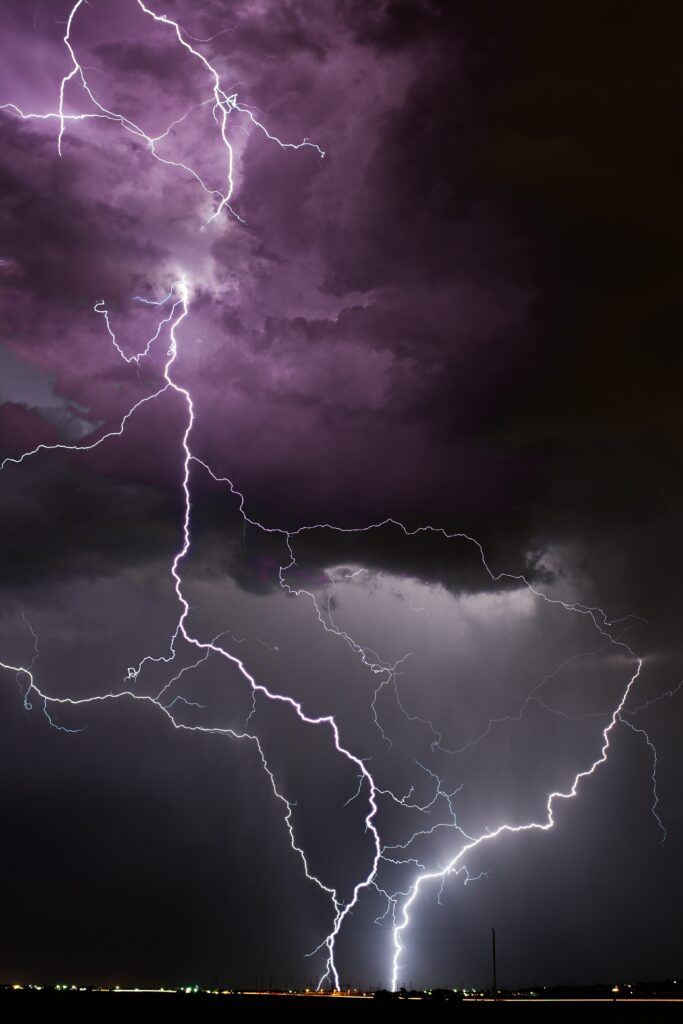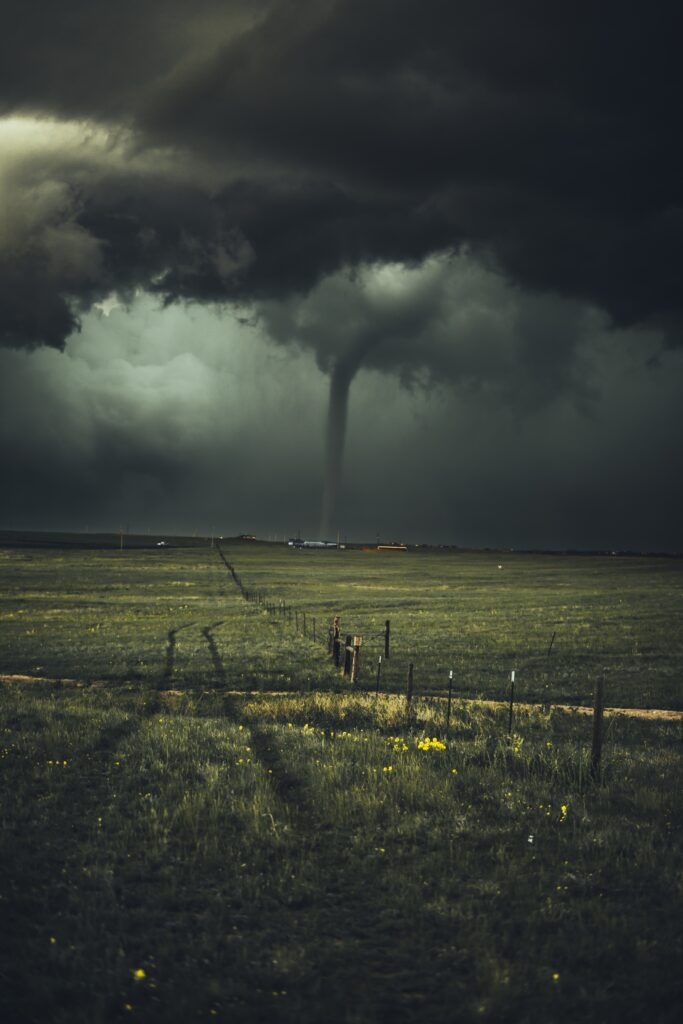In our latest article, we explore the crucial role that municipal workers play in preventing flooding by keeping storm drains clear. With unpredictable weather patterns and the increasing frequency of intense storms, these unsung heroes work tirelessly to maintain and protect the vital infrastructure that keeps our communities safe and dry. From clearing debris and inspecting underground pipes to implementing proactive maintenance strategies, their dedicated efforts ensure that stormwater flows smoothly and efficiently, helping to prevent costly and dangerous flooding events. Join us as we take a closer look at the behind-the-scenes work of these dedicated individuals and gain a deeper appreciation for their essential contribution to our everyday lives.



This image is property of images.unsplash.com.
Understanding the Importance of Clearing Storm Drains
Explanation of the purpose and function of storm drains
Storm drains play a crucial role in our cities and communities by preventing flooding and ensuring the safety of our neighborhoods. These drainage systems are designed to collect and redirect excess water from rainstorms, preventing it from accumulating on roads, sidewalks, and other public areas. By effectively channeling the water away, storm drains help protect both urban infrastructure and the general well-being of residents.
The role of storm drains in flood prevention
During heavy rainfall or storms, the volume of water on the ground can quickly exceed the capacity of natural drainage systems. This is where storm drains step in as a crucial line of defense against flooding. By swiftly channeling the excess water underground and into rivers or other designated outlets, storm drains minimize the risk of water accumulation and flooding. Without these drainage systems, streets could become impassable, homes and businesses could suffer severe damage, and public safety could be compromised.
The Responsibilities of Municipal Workers
Job description and duties of municipal workers
Municipal workers, often employed by local government authorities, are responsible for maintaining and managing storm drains within their jurisdiction. Their job involves a wide range of tasks, including regular inspections, identifying and clearing blockages, and ensuring the overall functionality of the drainage system. These dedicated workers ensure that storm drains are in optimal condition throughout the year, ready to protect our communities from the threat of flooding.
The key role of municipal workers in flood prevention
Municipal workers form the backbone of flood prevention efforts. Through their diligent efforts, they actively contribute to keeping our cities safe and functional during heavy rain events or storms. Their consistent maintenance and upkeep of storm drains ensure that water is efficiently diverted and does not pose a threat to public safety. By recognizing the vital role these workers play, we can appreciate their ongoing commitment to protecting our communities from flooding.



This image is property of images.unsplash.com.
Routine Maintenance of Storm Drains
Scheduling and performing routine inspections
Regular inspections are a fundamental part of storm drain maintenance. Municipal workers follow a scheduled plan that includes inspecting the condition of storm drain inlets, outlets, and pipes. This proactive approach allows them to identify any signs of wear and tear, blockages, or potential issues that may impede the functioning of the drainage system. By conducting routine inspections, municipal workers can spot problems early on and take the necessary steps to address them promptly.
Assessment of storm drain conditions
During inspections, municipal workers assess the condition of storm drains by visually examining the infrastructure and evaluating its structural integrity. They look for signs of erosion, cracks, or damage that may compromise the overall effectiveness of the system. By identifying and addressing these issues in a timely manner, the workers ensure that storm drains remain functional and capable of handling excess water during rainstorms.
Identification and removal of common blockages
One of the most common problems that storm drains face is blockages. Municipal workers are skilled in identifying the causes of blockages, which can include debris, sediment, leaves, and even tree roots. They use specialized tools to remove these blockages, maintaining the capacity of the drain to redirect water effectively. By promptly clearing these obstructions, municipal workers prevent potential flooding and help keep our streets and neighborhoods safe.
Adopting Modern Techniques for Drain Cleaning
Use of CCTV cameras for inspections
To enhance their ability to identify issues within storm drains, municipal workers utilize advanced technology such as closed-circuit television (CCTV) cameras. These cameras are inserted into the drainage system, allowing workers to visually inspect the interior of the pipes. This method enables a comprehensive assessment of conditions, identifying any cracks, fractures, or blockages that may be affecting the system’s functionality. Using CCTV cameras minimizes the guesswork and ensures a thorough examination of the storm drains.
Employing high-pressure water jets
In cases where blockages are more stubborn or located further along the storm drain system, municipal workers employ high-pressure water jets. These powerful jets of water dislodge and clear away debris, sediment, or other obstructions that may impede the flow of water. By implementing this technique, workers can effectively clear blockages and restore the drainage system’s functionality while minimizing the need for invasive measures that may cause disruption or damage to surrounding infrastructure.
Utilization of robotic cutters for blockage removal
For more severe blockages or instances where manual removal is not feasible, municipal workers may employ robotic cutters. These specially designed machines can navigate through the storm drain pipes, cutting and removing blockages that are particularly challenging or require more precision. The use of robotic cutters enhances the efficiency of clearing severe blockages, ensuring the continued effectiveness of the storm drain system.



This image is property of images.unsplash.com.
Handling Severe Drain Blockages
Identification of severe blockages
Despite regular maintenance efforts, severe blockages may occur, endangering the functionality of storm drains. Municipal workers are trained to identify signs of severe blockages, such as persistent flooding or limited water flow. By promptly recognizing these issues, workers can initiate appropriate measures to resolve the blockages and restore the system’s effectiveness.
Strategies for removing stubborn blockages
Removing stubborn blockages requires specialized techniques. Municipal workers may utilize more powerful equipment, such as industrial vacuum trucks, to remove accumulated sediment or debris that is causing the blockage. In extreme cases, they may even need to excavate and repair damaged sections of the storm drain system. By employing these strategies, municipal workers ensure the continuity of flood prevention measures and mitigate the risks associated with severe drain blockages.
Preventive measures to minimize severe blockages
To minimize the occurrence of severe blockages, municipal workers implement preventive measures. Regular maintenance, routine inspections, and prompt removal of blockages reduce the likelihood of debris accumulating and causing more severe issues in the future. Additionally, community education and awareness campaigns help promote responsible disposal of waste and discourage behaviors that may contribute to blockages, further safeguarding the functionality of storm drains.
Safety Measures During Drain Cleaning
Importance of safety during drain cleaning
Safety is a paramount concern during drain cleaning operations. Municipal workers understand the potential hazards involved and prioritize the implementation of safety measures. By doing so, they protect themselves and their colleagues while ensuring the continuity of services for the community.
Standard safety protocols followed by workers
Municipal workers adhere to strict safety protocols while performing drain cleaning tasks. This includes wearing appropriate personal protective equipment (PPE), such as gloves, goggles, and high-visibility vests. They also make sure to use caution signs and barricades to alert pedestrians and motorists to potential hazards. By following these protocols, workers mitigate risks and create a safe environment for themselves and the public.
Use of protective equipment
To further enhance safety, municipal workers use specialized equipment designed for drain cleaning tasks. This may include harnesses and safety lines to prevent falls, respiratory protection to guard against harmful fumes or dust, and sturdy footwear to prevent slips or trips. By utilizing these protective measures, workers minimize the potential for accidents and injuries, ensuring their well-being while carrying out their important duties.
Special Preparations for Storm Seasons
Understanding weather patterns and forecasts
During storm seasons, municipal workers closely monitor weather patterns and forecasts to anticipate potential heavy rain events or storms. By staying informed, they can prepare in advance and allocate resources accordingly. This knowledge helps them determine when to intensify drain inspections and cleaning efforts, ensuring that storm drains are prepared to handle increased water flow during adverse weather conditions.
Intensifying drain inspections and cleaning before storms
Before an anticipated storm, municipal workers intensify their efforts to inspect and clean storm drains. This proactive approach helps identify any maintenance needs or potential blockages that could restrict the flow of water during heavy rain events. By ensuring storm drains are clear and functioning optimally before storms hit, workers minimize the risk of flooding and reduce potential damage to infrastructure and property.
Emergency response plans for storm seasons
In addition to routine maintenance and inspections, municipal workers develop and implement emergency response plans for storm seasons. These plans outline the steps to be taken in the event of severe flooding or drainage system failures, ensuring an organized and effective response to protect public safety. By having these plans in place, workers can act swiftly and efficiently, mitigating the impact of storms and reducing the potential for widespread damage.
Collaboration with Other City Departments
Cooperation with city planning department for infrastructure
Municipal workers collaborate closely with the city planning department to ensure that storm drain infrastructure is well-integrated into urban landscapes. By working together during the planning and design phase, they can ensure the proper placement and sizing of storm drains, maximizing their effectiveness in flood prevention. This collaboration helps create a seamless connection between storm drains and other infrastructure elements, reducing the risk of drainage system inefficiencies.
Coordination with sanitation department for trash management
Effective trash management is essential to prevent blockages in storm drains. Municipal workers coordinate efforts with the sanitation department to ensure proper waste disposal and collection. By maintaining a clean and trash-free environment, the risk of debris accumulation and subsequent blockages is minimized. This collaboration between departments promotes a holistic approach to maintaining storm drains and safeguarding the community from flooding.
Working with the community on public awareness campaigns
Municipal workers recognize that community involvement is vital in preventing blockages and maintaining the functionality of storm drains. They actively engage with the public through public awareness campaigns and educational initiatives. By educating residents, businesses, and community organizations about the importance of responsible waste disposal and the impact of blockages on drainage systems, workers foster a sense of shared responsibility and encourage behaviors that contribute to maintaining effective storm drains.
Training and Skills Required for Municipal Workers
Necessary qualifications for municipality workers
To become municipal workers, individuals typically need a high school diploma or equivalent. Strong physical fitness and the ability to work outdoors in various weather conditions are also important qualifications. Additionally, some jurisdictions may require specialized certifications or licenses, depending on the specific tasks involved in storm drain maintenance.
Specific training for storm drain cleaning
Municipality workers receive specific training on storm drain maintenance and cleaning techniques. This includes learning about different types of storm drains, common issues affecting the functionality of the drainage systems, and the proper use of equipment and tools. Training also emphasizes safety protocols and the importance of following established procedures to ensure effective drain cleaning.
Continuous learning for adopting new techniques
As technology and techniques in storm drain maintenance continue to evolve, municipal workers engage in continuous learning opportunities to stay up to date. They attend workshops, seminars, and training programs that introduce new equipment, advancements in inspection methods, and innovative approaches to efficient drain cleaning. By embracing continuous learning, workers enhance their skills and remain prepared to tackle emerging challenges in storm drain maintenance.
Challenges Faced by Municipal Workers
Difficult weather conditions
Municipal workers often face challenging weather conditions while performing their duties. Inclement weather, such as heavy rain or storms, can make drain cleaning operations more challenging and hazardous. Despite these difficult conditions, workers remain committed to their tasks, ensuring that storm drains are properly maintained to protect our communities.
Public disregard and vandalism of storm drains
Unfortunately, some members of the community may disregard the importance of storm drains or engage in acts of vandalism that hinder their functionality. This can include dumping trash or other debris into storm drain inlets, which leads to blockages and increased flood risks. Municipal workers are dedicated to combating this issue through public education, awareness campaigns, and coordinated efforts with law enforcement agencies to prevent vandalism and promote responsible behavior.
Financial limitations and resource constraints
Municipal workers often face financial limitations and resource constraints that can impact the efficiency of storm drain maintenance. Limited budgets may restrict the frequency of inspections or delay the implementation of preventive measures. However, workers prioritize safety and utilize available resources to the best of their ability, continuously striving to provide effective storm drain maintenance despite these challenges.
In conclusion, municipal workers play a vital role in maintaining and clearing storm drains to prevent flooding and ensure the safety of our communities. Through routine maintenance, modern techniques, and collaboration with other city departments, these dedicated individuals work tirelessly to protect our neighborhoods from the threat of flooding. Despite the challenges they face, municipal workers continue to prioritize public safety and adapt to changing circumstances, ensuring the functionality of storm drain systems and safeguarding our cities.
